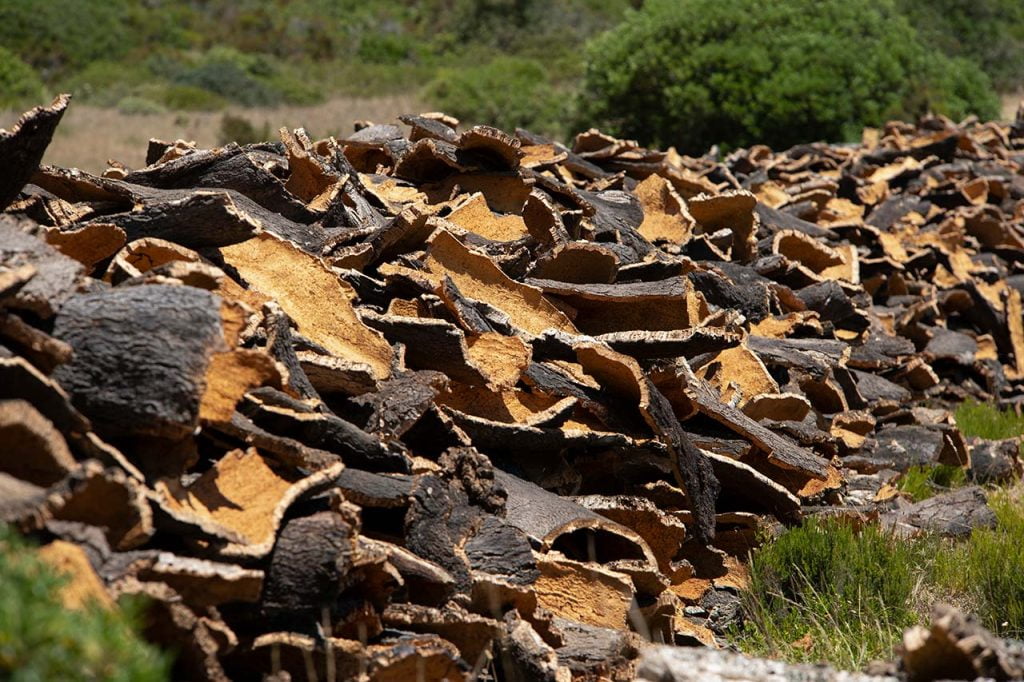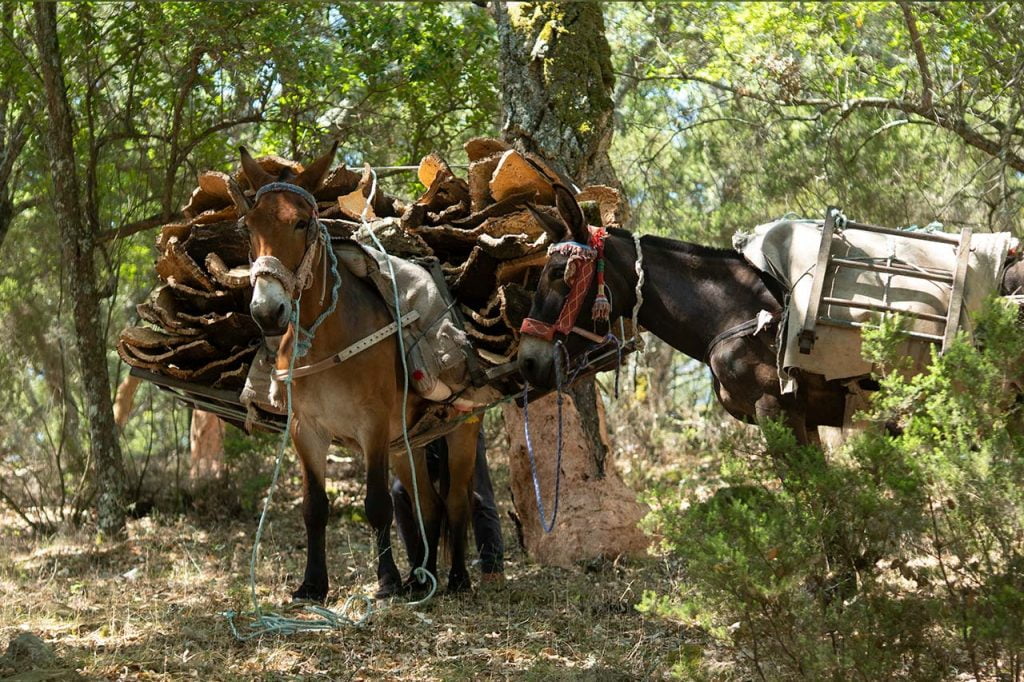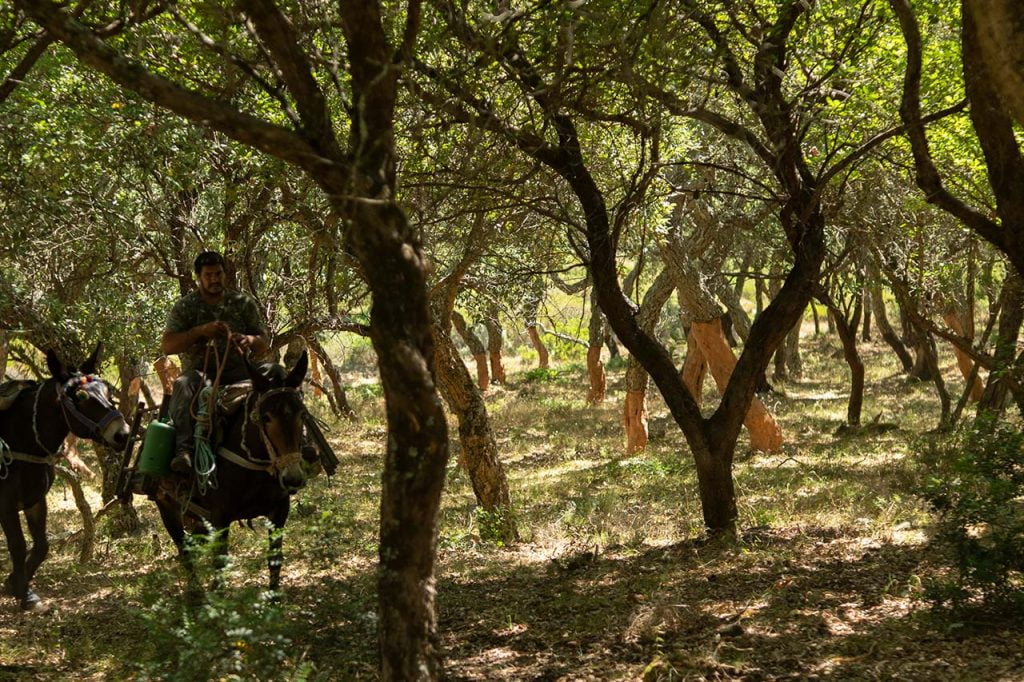The cork extraction season has just come to a successful end in the Cork Oak Park, where our cork oak reserve is located. At Torrent, we like to review our production processes in order to ensure ongoing improvement and be even more committed to sustainability.
Today, we want to share with our readers all the information related to cork extraction and how we managed to make the manufacture of our microgranulated cork stoppers a reality.

The origin of the uncorking process: cultivating cork oak and the first extractions
The cork oak is a tree that can grow naturally from the planted acorn or by planting the so-called “seedling“, which is a small cork oak that is embedded in the ground.
Once they are 25 years old, the bark can be extracted for the manufacture of cork: the product of this first extraction is called “virgin cork”. The plant should then be allowed a recovery period during which the bark becomes thicker. This takes approximately 9 to 10 years.
After this period, a new extraction will be carried out, which is called “removal” or “peeling”. This second phase produces a cork called “second cork“, which is a higher-quality raw material than “virgin cork“.
The “removal” of the cork is carried out between May and August. During this period, the tree has better conditions for the cork to be extracted more gently, without being damaged.
Cork sheets
Once the cork is obtained, a raw material selection process is carried out. Here, the sheets are separated according to their thickness:
- The thicker sheets are of higher quality, which is why they are used for the manufacture of natural cork stoppers.
- The remaining sheets are used for chipboard and technical stoppers.
All the material extracted from the cork extraction is used in a responsible and sustainable way.

Sustainability as a key factor
Overall, the cork extraction is a sustainable process based on a respect for a natural raw material. For Torrent, sustainable production is a priority: we cannot conceive of a way to produce stopping plugs without avoiding a negative impact on the environment.
Our customers know and value this, because we are all aware that the world is moving towards sustainable processes and the use of materials. For the Torrent Group, the entire life cycle of cork is sustainable: from growing cork oaks in Spanish soil, through the cork extraction process and the final incorporation of the cork obtained in the microgranulate manufacturing process and stoppers, bartops, therefore producing a natural and sustainable product.

In crops, sustainability is achieved by manual extraction, since machines are not used (there is no substitute for the human hand). This has several positive effects, to name but a few:
- The natural environment is not affected by gaseous contamination or noise that is harmful to the native fauna.
- Sources of work are maintained for the local area (rural employment is known to be very important for the national economy).
- The maintenance of cultural traditions in primary production areas such as Los Alcornocales is supported.
- A natural source of respiration is maintained. Cork oaks absorb CO2 and are an important factor in the fight against climate change.
Finally, there is also a specific technical consideration: if the tree is given the maximum and best care, it will have a better life and the extracted cork sheets will be of a superior quality.
This is another of the lessons that experience teaches us: being sustainable is not just a responsibility towards the environment. It is also a smart business strategy: taking care of the planet is taking care of ourselves, and taking care of ourselves is taking care of our customers.

